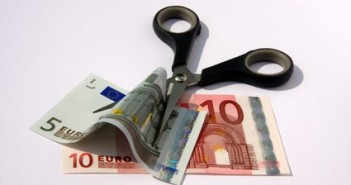With the paths of devaluation or inflation not viable or not available, there is no way that Greece could stay in the euro-zone without an official sector haircut, says Simon Smith of FxPro. The “official sector” consists of the IMF, the ECB, and euro-zone governments, with Germany being the largest.
In the interview below, Smith discusses the “kid’s fantasy novel” approach regarding Greece, the fiscal cliff which Smith compares to a Russian Roulette, the Aussie’s direction and other topics.
 Simon has over seventeen years experience of macro forecasting and investment strategy research. Prior to joining FxPro in May 2010, Simon was a consultant with Thomson Reuters, having spent four years as Chief Economist at Weavering Capital.
Simon has over seventeen years experience of macro forecasting and investment strategy research. Prior to joining FxPro in May 2010, Simon was a consultant with Thomson Reuters, having spent four years as Chief Economist at Weavering Capital.
He has held economic and strategy positions with Standard & Poor’s, together with consultancy firms 4Cast and MMS International.
Simon holds an MSc. in Economics from the University of London and a BSc. from Brunel University.
1. Greece: Do you think that a haircut for the official sector will eventually be considered? Or will EU leaders still want to keep Greece afloat without taking losses?
‘Want’ doesn’t always get, as I tell my children. The same applies to the EU, which often acts like a child when it comes to dealing with Greece. The troika cannot continue to reduce interest and extend maturities on its loans to Greece, as well as pushing fiscal targets further into the future. It’s an approach taken straight from a kid’s fantasy novel. Either Greece will leave the euro or the official sector will have to take a hit, and the latter looks the more likely. No debt crisis has ever been solved by piling on more debt, especially when the routes of devaluation or inflation are not viable or available.
2. Now the US elections are behind us, will the fiscal cliff dominate in the agenda in the next few weeks? Or will this front remain calm until the deadline gets closer?
This seems a little like Russian roulette. It’s difficult to remain calm when you may get a bullet in the head. For now, markets are twitchy, with volatility measures still at multi-year lows. The difficulty is that there are uncertainties as to how a deal will be put together (or another sticking plaster applied) and also of the impact on the dollar. I’ve said before that the reserve-currency status of the dollar is a curse on the US at times like this, because it fails to reflect that the fiscal cliff is an issue. A risk-off move based on market jitters would see the dollar higher if established correlations hold. At a naive level, this gives the impression that markets – at least FX – don’t care much for the fiscal cliff. The view then prevails that the US could never suffer a fiscal crisis of any extent and that investors’ ultimate faith in the dollar will prevail. But there’s a limit to everything, not least running endless deficits with an aging population.
3. Japan saw its first current account deficit in 30 years, after many months of trade balance deficits. Does this add pressure on the yen, or will safe-haven flows continue to have the upper hand?
It’s a difficult balance, naturally. There are much bigger secular trends at play with regards to the yen. Japan has been the world’s large net creditor for more than 20 years, so it has built up a sizable (JPY 580trn) pile of overseas investments as a result of these current account surpluses. At the same time, the population is aging at a faster pace than any other major nation, so it’s inevitable that savings will start to be run down. Many have called for the fall of the yen and most have been squashed in the process. The arguments are there for a weaker yen, but it’s all down to the timing and balance of flows. I think the yen will hold up well, but next year the cracks are more likely to appear.
4. The Aussie enjoyed the decision not to cut interest rates and the latest RBA statement was upbeat. What would be needed to push AUD/USD beyond the 1.06 line?
For now, it’s looking like a tall order. Rates are still headed lower in our view. But even if a further rate cut gets delayed, investors are far more nervy about carry, which overall (G10) in the past three years has offered half the returns and twice the risk vs. the good times of 2001-2007. It’s difficult to see risk taking off into year-end to the degree that would prompt a push above 1.06.
5. The price of oil is lower in recent weeks and OPEC has lowered oil-demand forecasts. Could sustained lower prices have a positive impact on the US economy?
All else being equal? Yes. But of course, all else is rarely equal. The other point to note from oil-price moves is the likely policy response, but right now it’s unlikely that fluctuations will derail the Fed from its planned path of QE, given that unemployment has moved to the top of its agenda. I think for now the impact will be limited though. Gasoline prices are still 20% higher vs. a year ago and 6% up on the year.
